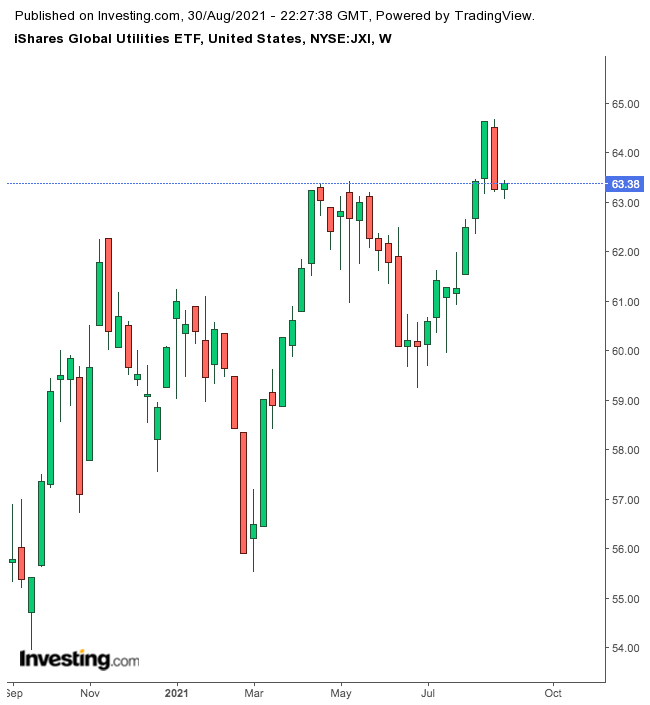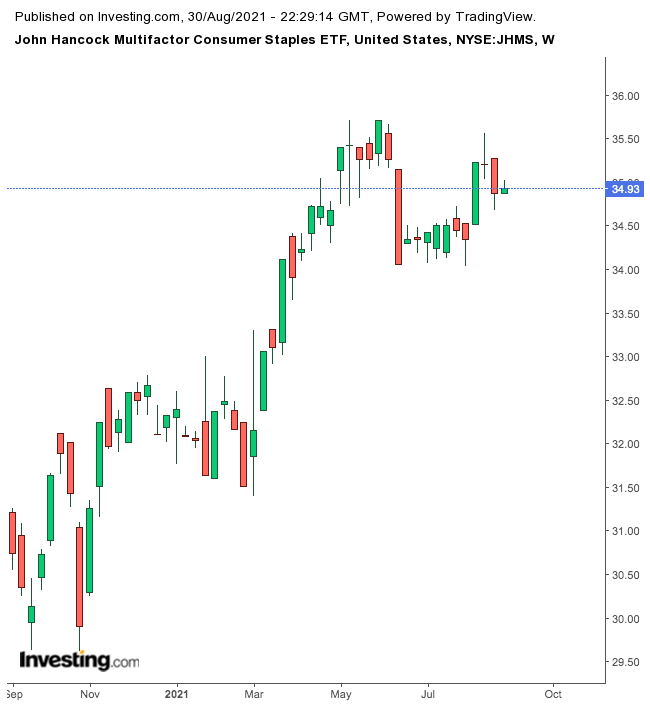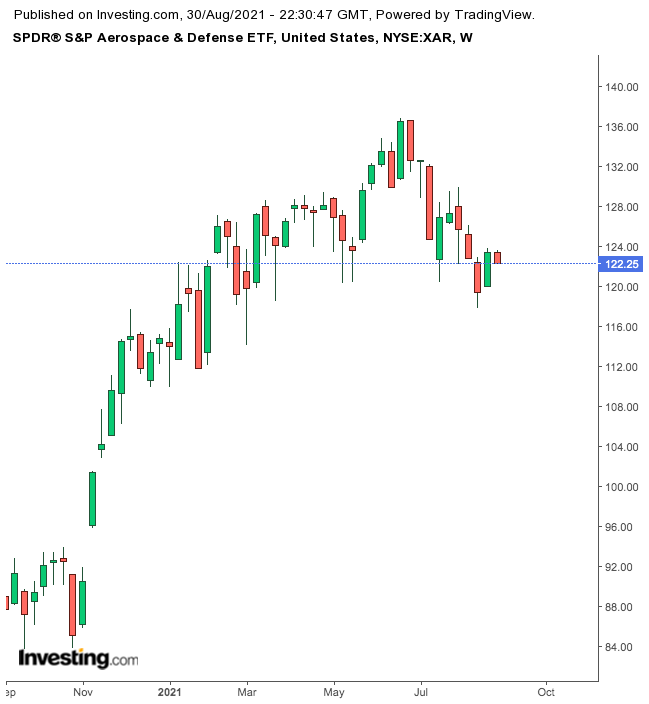August was a strong month for the broad indices, with the Dow Jones Industrial Average, S&P 500 and NASDAQ 100 gaining about 1.4%, 2.5% and 2.7%, respectively. As we welcome September, analysts debate whether there could be profit-taking in some of the darlings of Wall Street, especially those in the tech sector.
Therefore, today we introduce three exchange-traded funds (ETFs) from three defensive sectors. Readers might want to research them further with a view to buy the dips and diversify their portfolios.
1. iShares Global Utilities ETF
Current Price: $63.38
52-Week Range: $53.95 - $64.68
Dividend Yield: 2.90%
Expense Ratio: 0.43% per year
The iShares Global Utilities ETF (NYSE:JXI) invests in global electricity, gas and water utilities. The fund began trading in September 2006, and has around $173.9 million in assets.

JXI, which has 67 holdings, tracks the returns of the S&P Global 1200 Utilities (Sector) Capped Index. In terms of the sub-sectoral breakdown, electric utilities comprise the biggest portion, with 59.9%; followed by the multi-utilities (30.12%) and gas utilities names (5.14%).
The leading 10 stocks account for almost 45% of the fund. Close to 61% of the companies are based in the US. Next in line are names from the UK (6.12%), Spain (6.08%), Italy (5.94%), France (3.74%) and other countries.
NextEra Energy (NYSE:NEE), Duke Energy (NYSE:DUK), Southern Company (NYSE:SO), Enel (NYSE:ENIC), Iberdrola (OTC:IBDRY), Dominion Energy (NYSE:D) and National Grid (NYSE:NGG) lead the names in the roster.
Over the past year, the fund is up about 13.3% and has returned 5.2% so far in 2021. Trailing P/E and P/B ratios stand at 22.91x and 2.15x. We find the valuation still a bit lofty, although it is possible to argue that the utilities sector is among the least overvalued compared with other segments of the broader market. A potential drop toward $60 would improve the margins of safety. Several of the names in the fund are also plays on the growth of renewable energy.
2. John Hancock Multifactor Consumer Staples ETF
Current Price: $34.93
52-Week Range: $29.62 - $35.72
Dividend Yield: 2.00%
Expense Ratio: 0.4% per year
The John Hancock Multifactor Consumer Staples ETF (NYSE:JHMS) gives access to large- and mid-capitalization US consumer staples stocks. This small fund started trading in March 2018 and has around $22 million in assets.

JHMS, which has 52 holdings, tracks the returns of the John Hancock Dimensional Consumer Staples Index. In terms of the sub-sectoral breakdown, food products have the biggest slice (30.47%). We then see food and staples retailing (23.11%), beverages (19.82%) and household products (15.22%). The top 10 names account for almost half of the fund.
Shares of Costco Wholesale (NASDAQ:COST), Procter & Gamble (NYSE:PG), Coca-Cola (NYSE:KO), Walmart (NYSE:WMT), PepsiCo (NASDAQ:PEP) and Kroger (NYSE:KR) lead the holdings.
Over the past year, JHMS is up about 11% and has returned 7.8% year-to-date. The fund saw a record high in early June. Trailing P/E and P/B ratios are 23.47x and 4.10x.
Most of the ETFs focusing on the consumer sector have underperformed the broader market so far in 2021. However, a fund like JHMS remains a viable option for decreasing the volatility of portfolio returns, ensuring capital preservation as well as receiving passive income. We’d look to invest at around $33.
3. SPDR S&P Aerospace & Defense ETF
Current Price: $122.25
52-Week Range: $83.71 - $136.81
Dividend Yield: 0.78%
Expense Ratio: 0.35% per year
As its name would suggest, the SPDR® S&P Aerospace & Defense ETF (NYSE:XAR) invests in aerospace and defense stocks. Therefore, it may not be appropriate for investors who do not want to include these companies in their portfolios. Since the fund’s inception in September 2011, net assets have reached $1.28 billion.

XAR, which has 33 holdings, tracks the returns of the S&P Aerospace & Defense Select Industry Index.
Leading holdings in the roster include Axon Enterprise (NASDAQ:AXON), which is known for its TASER devices; Teledyne Technologies (NYSE:TDY), which has a strong focus on digital imaging and instrumentation; defense heavyweight L3Harris Technologies (NYSE:LHX); industrial conglomerate Textron (NYSE:TXT), which has a big emphasis on aviation; and leading army contractor General Dynamics (NYSE:GD).
The fund returned more than 35% in the past 12 months, and 7.5% YTD. XAR saw a record high in late June. Trailing P/E and P/B ratios are 24.26x and 3.26x. Interested readers could regard a potential decline toward $118 as a better entry point.
